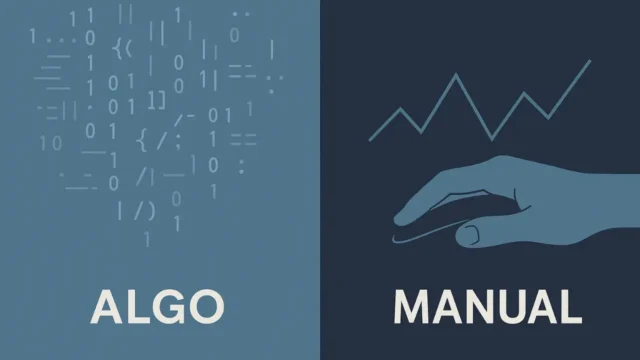Follow Us
Passive Trading: Pros, Cons, and How to start Now

Table of Contents
Why Passive Trading Is Gaining Popularity
Want to grow your wealth without obsessing over stock charts? Passive trading might be what you’re looking for.
If you’re not into market timing or picking individual stocks, you’re not alone. Passive trading is for those who want steady, long-term growth without the constant monitoring.
It’s an investing strategy that mirrors the market instead of trying to outsmart it, making it both simple and effective for busy investors.
The beauty of passive trading lies in its ease. You invest in funds that track the market, like index funds or ETFs, and let them handle the heavy lifting. You don’t have to check in every day. Over time, this approach builds wealth while keeping your stress levels low.
What Is Passive Trading?
Passive trading is about keeping things simple. Instead of chasing the next big stock, you invest in a diversified portfolio of assets that mimic the market’s performance.
This usually involves tools like index funds or ETFs, which track benchmarks like the S&P 500, Nifty 50 or the total stock market.
The idea is straightforward: by following the market’s overall growth, you’re likely to achieve consistent returns over time. It’s not about quick wins or beating the market.
Instead, it’s a “set-it-and-forget-it” strategy that requires minimal effort but delivers reliable results in the long run.
For most people, the ease and cost-effectiveness of passive trading make it a no-brainer for building wealth steadily.
Pros and Cons of Passive Trading
Like any strategy, passive trading has its strengths and limitations. Here’s a quick breakdown to help you decide if it’s the right fit for you.
| Aspect | Pros | Cons |
|---|---|---|
| Costs | Lower brokerage fees due to minimal trading and no active management. | No flexibility to adapt to market changes, potentially missing out on short-term opportunities. |
| Stress Level | Reduced emotional stress – no need to react to daily market fluctuations. | Entirely dependent on market performance; downturns directly affect your portfolio. |
| Performance | Proven long-term results: Passive funds often outperform active ones because of lower costs. | Limited upside potential: Returns only match the market, not exceed it. |
| Ease of Use | Simple to set up and maintain, making it beginner-friendly. | Lack of active adjustments means no ability to respond to changing market dynamics. |
Passive trading works best for people who value simplicity and long-term growth. But if you’re someone who enjoys chasing high returns or reacting to market shifts, it might feel too hands-off.
How to Start Passive Trading
Getting started with passive trading is easier than you think. Follow these steps to set yourself up for success.
Step 1: Choose the Right Investments
The core of passive trading is selecting the right funds. ETFs and index funds are great options because they track market benchmarks and have low fees.
- What to Look For: Focus on funds with low expense ratios—this keeps your costs down and your returns higher.
Choosing funds that align with your financial goals will set the foundation for a successful portfolio.
Step 2: Automate Contributions
Consistency is key, and automating your investments makes it easy.
- How It Works: Many platforms let you set up recurring deposits, so you invest a fixed amount at regular intervals.
- Why It Matters: Automation ensures you stick to your plan, even during market volatility.
Step 3: Monitor Periodically
Passive trading doesn’t mean ignoring your portfolio entirely. Check in periodically to make sure everything’s on track.
- What to Check: Review your asset allocation to ensure it still matches your goals (e.g., stocks vs. bonds).
- Adjust if Needed: If your life situation changes, like preparing for retirement—you may need to rebalance for lower risk.
This occasional maintenance keeps your portfolio aligned with your goals without requiring constant attention.
The Passive Path to Financial Freedom
While passive trading may not deliver headline-grabbing returns, it offers a proven way to grow your wealth steadily over time.
Its simplicity, low costs, and hands-off approach make it an excellent strategy for anyone looking to build long-term financial security without the stress of daily market monitoring.
If this sounds like your kind of investing, now’s the time to take the first step. Explore passive trading platforms, choose the right funds, and set up a portfolio that works as hard as you do.
Financial freedom doesn’t have to be complicated, and passive trading can help you get there.
Disclaimer:
This content is for informational purposes only and should not be considered financial advice.
Read full Disclaimer.




